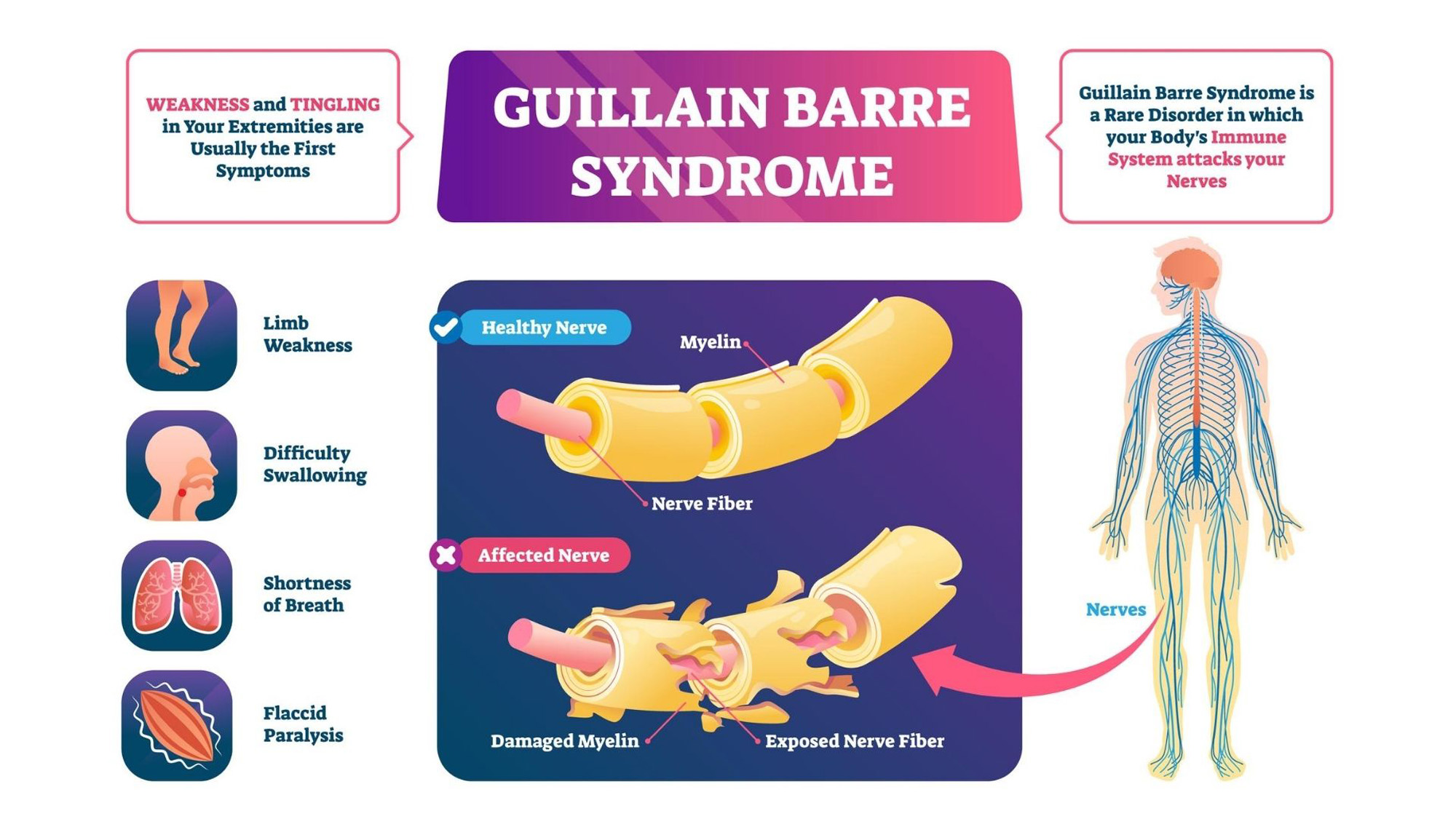What is Guillain-Barré syndrome?
Guillain-Barré syndrome is a rare, serious neurological disorder in which a person’s immune system damages the nerves. The syndrome can affect the nerves that control muscle movement as well as those that transmit pain, temperature, and touch sensations. This can result in muscle weakness and loss of sensation in the legs and/or arms. Guillain-Barré syndrome affects people of all ages but it is more common in adults and males.
Causes
The exact cause of Guillain-Barre syndrome is unknown. But patients report symptoms of an infection which includes a respiratory or gastrointestinal infection or Zika virus. In Guillain-Barre syndrome, your immune system, which usually attacks only invading organisms, begins attacking the nerves. The damage in the nerves prevents them from transmitting signals to your brain, causing weakness, numbness, or paralysis.
Symptoms
The first symptom of Guillain-Barré syndrome is usually a tingling sensation in your toes, feet, and legs. The tingling spreads upward to your arms and fingers. The symptoms can progress very rapidly. The other symptoms of Guillain-Barré syndrome include tingling or prickling sensations in your fingers and toes, muscle weakness, difficulty walking steadily, severe lower back pain, loss of bladder control, difficulty breathing, and paralysis.
Types
GBS can take many forms. Acute inflammatory demyelinating polyradiculoneuropathy (AIDP) is the most common type of GBS. In this type, the weakness begins in the lower part of the body and gradually moves upward to affect other areas. Miller Fisher syndrome is an acquired nerve disease and a variant of GBS. Another form of GBS is acute motor axonal neuropathy, which causes sudden weakness in the limbs and sometimes troubles breathing.
Treatment and care
There is no known cure for this disease, but treatments can help improve symptoms of GBS and shorten its duration. Guillain-Barré syndrome is potentially life-threatening. GBS patients should be hospitalized so that they can be monitored closely. Supportive care will include monitoring of breathing, heartbeat, and blood pressure. In cases where muscle weakness persists after the acute phase of the illness, patients may require rehabilitation services to strengthen their muscles and restore movement.
Treatment at home
Most people make a full recovery from GBS, but this can take time. There is currently no cure for GBS, but various treatments can reduce its impact. Physical therapy during recovery can help the patient cope with fatigue and regain strength and proper movement. Training with adaptive devices, such as a wheelchair or braces, can be included to give mobility and self-care skills.
When to seek a neurologist?
Seek a neurologist if you notice any of the early symptoms of Guillain-Barré syndrome, such as numbness or weakness. Call for an ambulance immediately if someone has difficulty breathing, swallowing, or speaking or cannot move their limbs or face. This is a medical emergency and the person needs to be seen in hospital as soon as possible.

